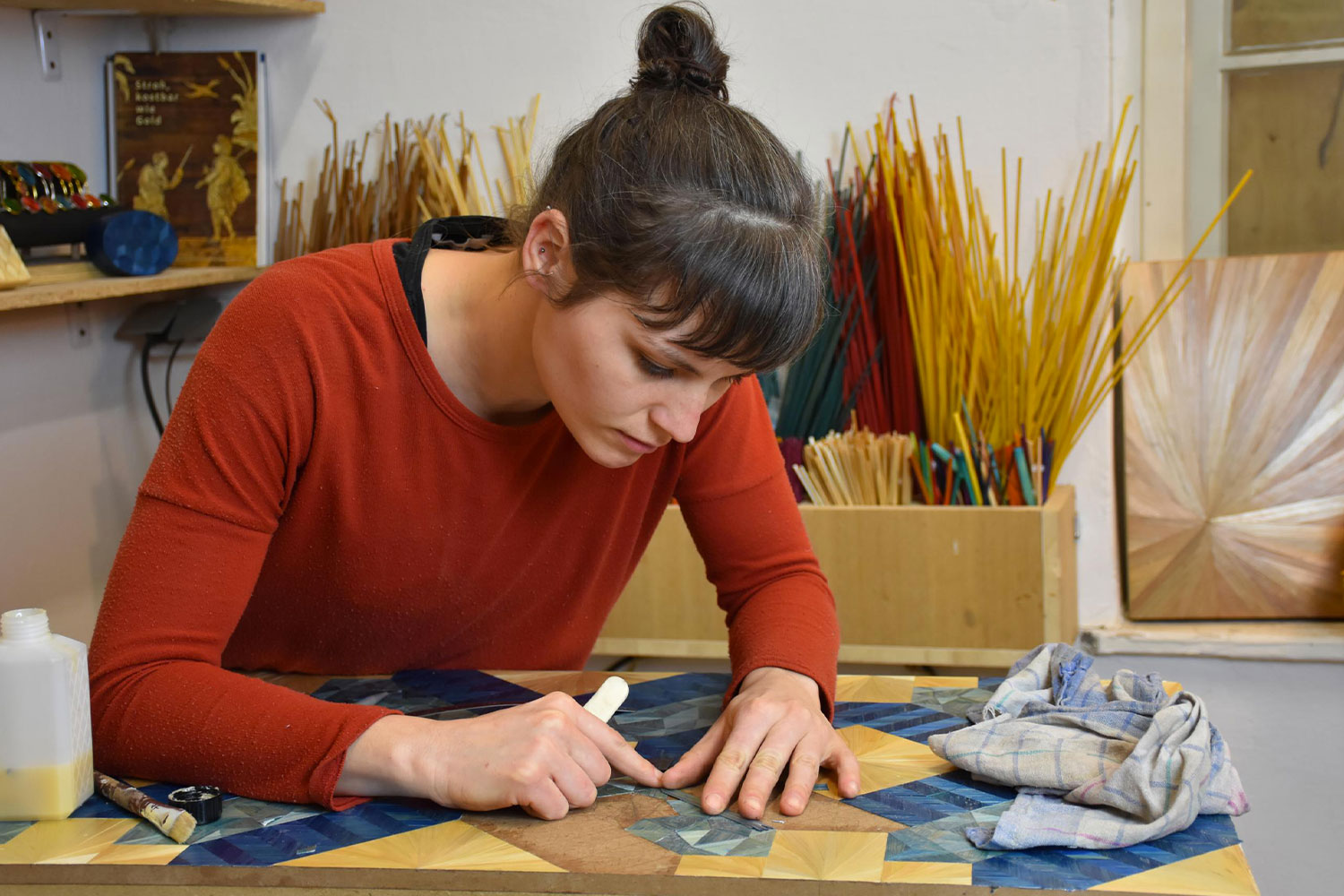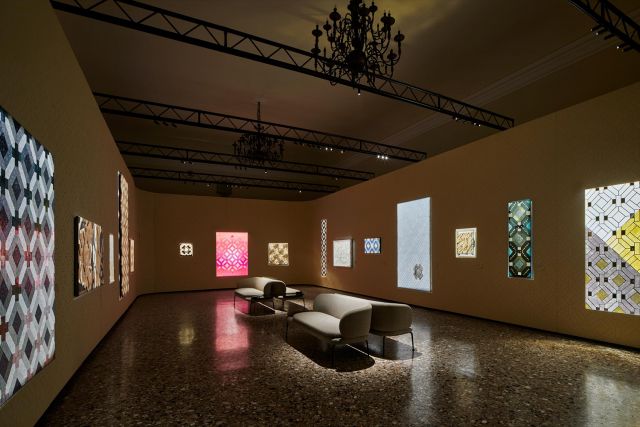 © All rights reserved
© All rights reserved
Tabea Vietzke
Straw marquetry makerThe trigger for Tabea Vietzke’s passion for straw marquetry lies 300 years in the past. “It happened when I first saw the works of 18th-century straw marquetry master CF Hering, which have not lost any of their brilliance. Their colours still shine like on the first day,” she says. Tabea was entranced by straw marquetry “with its silky golden shine” and felt she “had no choice but to devote myself to this technique”. It comes as no surprise that it was her profession as a restorer that led her to discover the traditional art of straw marquetry since the craft is almost extinct today. However, it was the successful example of master artisan Lison de Caunes that gave her the confidence to pursue this path.
TechniqueStoryStraw marquetry is a technique that consists of placing straw on a support to form patterns. This craft, entirely carried out by hand, includes several key stages. The straw is split, then crushed with wooden pliers and glued from edge to edge. Straw has a natural silica that produces a particular light or shimmer. This technique, which gained in popularity during the 17th century in Italy, saw a radical modernisation in its design during the Art Deco period in France. Designers such as Paul Poiret and André Groult integrated this technique into their furniture designs. Until recently, straw marquetry was at risk of being forgotten. Even today, this craft, which a century ago could be found in hundreds of workshops around Europe, only exists in a handful of European workshops.
Objects Pattern of Crafts Exhibition
Contact
Pattern of Crafts Exhibition
Contact
Schwartzkopffstr. 4 10115, Berlin, Germany
+49 15730084328
tabea.vietzke@gmail.com
www.strohmarketerien.com Discover on Homo Faber Guide









